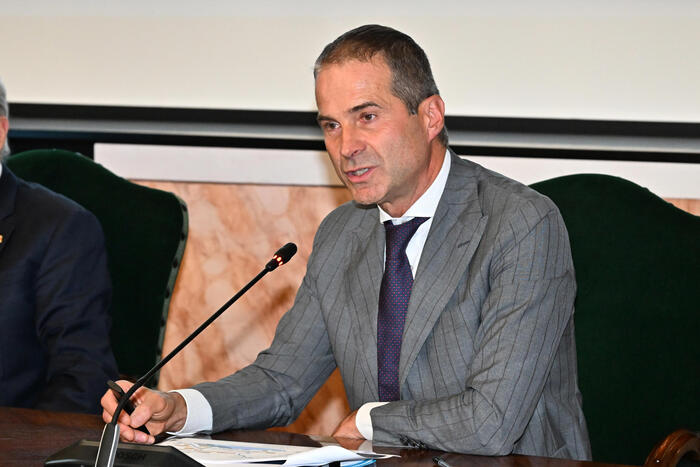Paula galinsky
05/16/2021 2:32 PM
Clarín.com
Society
Updated 05/16/2021 2:32 PM
It was January 2020 when we all set our eyes on China.
They spoke of a virus
, of massive contagions and deaths. We were very far away. He wasn't going to touch us. A few months later, the first infected arrived in Argentina and our first deceased. We counted 100 and read their stories, we were moved, we were afraid, we shut ourselves up. Time passed and there was no choice but to begin to naturalize the new reality: the chinstrap, the double mate, the fist instead of the kiss. Also the daily reports with the number of deaths from Covid-19.
But that terrible number continued to rise (10,000, 50,000, today we exceed 70,000) and the escalation caused us to
re-signify
the pandemic.
At this point,
almost everyone knows someone who was seriously ill
and, in many cases, we also have a relative, friend or family member who has passed away.
Our social networks were filled with goodbyes, those fatalities today are part of our circle.
In dialogue with
Clarín
, specialists refer to this new moment that we must face, marked by
loss, grief, identification
and, in some cases, denial.
"When things happen close by, when it comes to people close to us, we tend to feel identified," explains Harry Campos Cervera, psychoanalyst and psychiatrist at the Association of Psychiatrists of Argentina (APSA).
In this sense, the anguish is greater because "the loss of that other is also our
own loss due to the bond that united us
to that person who is no longer there" and because when someone we know dies another idea arises that terrifies us: we think that it The same could happen to us.
In this context, the specialist details, the impact of a near death
can lead to greater awareness and care or denial and rejection
, as a defense mechanism against a fact that we cannot assimilate.
In the second wave of coronavirus in Argentina more people have victims of their inner circle.
How losses and fears are processed, according to specialists.
To this is added the situation of individual grief and, in this case, also collective due to the number of deaths.
“It could be said that we went through three moments as a society: at the beginning we were faced with an
invisible threat
.
Then, with the increase in fatalities, we began to naturalize what was happening as an
adaptive way
not to live every day in despair.
Today that
despair
returned due to
the proximity of the deaths ”
, reflects Campos Cervera.
Stopping watching the news or reading the newspapers, as a way of
forgetting for a while about the coronavirus and its consequences
, is no longer enough.
In social networks we meet friends or acquaintances asking for the recovery of an infected loved one or firing him.
“There are people who respond to these demonstrations by abandoning the networks for a while, it is their
form of escape
to avoid identification.
At the other extreme are those who practice
hypervigilance
as a control strategy, ”says the APSA expert.
And he adds: “They are people who look for certain details
that distance them from the victim to calm down
.
They repeat that this other was infected because he did not take care of himself or died because he had comorbidities ”.
The second wave
The second wave, Campos Cervera adds, comes with
an extra concern.
Not only do well-known people die, but in many cases they are
young
people
.
“At the beginning of the pandemic, children were afraid for their parents.
Today the opposite happens:
parents are scared for their children ”
, he warns.
For Guillermo Bruschtein, also a psychiatrist and psychoanalyst at the Argentine Psychoanalytic Association (APA), one of the most difficult questions for human beings has to do with “representing one's own death”.
"The pandemic puts us in front of the
unmanageable
and the
catastrophic,
" he highlights.
“We need to feel that we have
the situation under control
(even if it is not real).
That relieves us.
But in this context it becomes almost impossible to achieve certainty ”, he says.
He agrees with Campos Cervera that "when someone close dies
we reconnect with the fear of dying."
"Feelings of anguish, rejection, denial and also
phobias appear,
" says Bruschtein.
“The loss of an other whom we love implies, at times, losing a part of oneself and of the way in which we organize our own life.
It results, in turn, in the lack of references ”, adds the expert.
The death of a public figure can also hit us.
"The
death of a famous person
, who we do not know in person but which is part of our routine because, for example, he 'accompanies us' every day from television or radio, can also affect us," he confirms.
The key, here too, is in
the identification.
In this context, the APA specialist remarks, pre-existing pathologies such as
anxiety
disorders
,
insomnia
, and autoimmune diseases
are increasing
.
“Sharing what happens to us with others always helps.
Also assistance
from a professional, ”advises Bruschtein.
Finally, it points out that what is happening generates pain and even panic and that, on many occasions, the prolongation of
deprivation
situations
can lead to more
hostile
behaviors
.
"The way of behaving is changing because we
lack resources to face what we have to live," he
closes.
SC
Look also
What is the Manaus strain that is already circulating in Argentina like and why is it so dangerous
Psychological consultations for boys on the rise: the symptoms of the second wave









